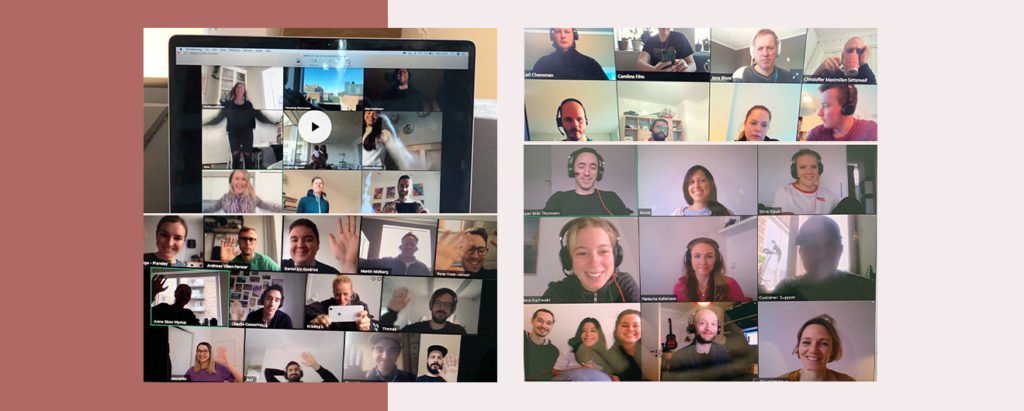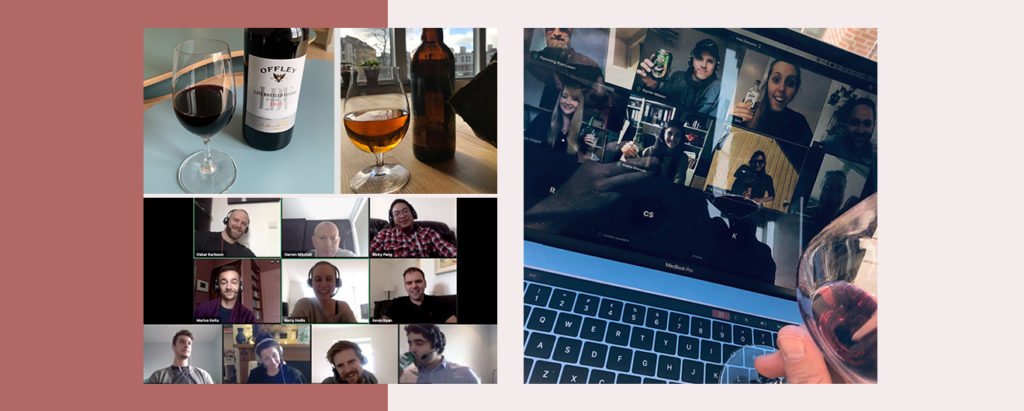
Article
5 min read
The 4 types of communication styles in the workplace
Nikki Thorpe
Jul 6, 2020
Chapters
The four types of communication styles in the workplace
How many results do you think there would be if you searched for the phrase “communication books for managers”?
You may think hundreds, maybe even a thousand, but it is over 3,000. That’s because communication is a skill that is critical for a Manager’s success, and there are a lot of different opinions on how to learn and use communication in the workplace.
So, to be effective managers by having great communication skills – where do we start? We have identified what you need to know about effective communication in the workplace.
The most important thing to keep in mind for being a great communicator is understanding there are different communication styles.
Why is communication so important in the workplace?
Your job as a Manager is to get results through other people, and that means communicating to them in a way they can relate to and understand. Your employees need to be able to take the information you give them and turn it into successful results. If you do not communicate effectively, then your employees will not know what to do with the information or they may not feel engaged enough to want to deliver results.
When you communicate effectively with your employees, you should see positive results across all areas including:
- Increased employee performance because they are clear on what is expected of them and the goals they are working towards
- Better results at every level in the organisation
- More time for you to focus on your job since employees will not spend time asking questions or seeking clarification
- Better use of resources and less time fixing mistakes and more time focusing on delivering successful results
- Quicker and clearer decisions since there will be less time trying to figure out confusion
- Improved employee morale since when people communicate more effectively, they feel better about their team, and they will want to achieve results
Managers must know how to communicate with their employees in the most effective way and that may mean using different styles.
Even though there are multiple communication styles, people typically exhibit components for one of four different communication styles. Some may even favour one style over the other or combine two different styles.
Keep in mind – there is no “right” or “best” communication style out of the four styles. The “right” or “best” way for your communication is to understand which of these styles the other person prefers and to tailor your style to them.
What different communication styles exist at work?
1. Direct Communication Style
A Direct Communication style is clear, concise, and unfiltered. There is no hidden message and no subtlety. People with a direct communication style prefer clear and actionable information. They want to get to the point quickly and want others to do the same.
People with this style may appear more assertive in the way they communicate with others. They can dominate a conversation either in an individual or group setting.
Direct Communicators typically…
- Ask you to “get to the point”
- Do not like small talk
- Quickly “tune out” if they feel the information is not important to them
- Focus on getting the information they need quickly so they can start working
- Tell people to do something vs. ask them to do something
- “Tell it like it is” without fear of how others will interpret the message
- Tell others exactly how they are feeling instead of hiding it
One of the benefits of this communication style is you know exactly where you stand with that person. They will tell you their exact thoughts and feelings about a topic.
How to work with Direct Communicators
- Do not avoid an issue or try to passively approach it – talk about it openly
- Do not use undecisive words such “maybe” or “possibly” – focus on decisive actions and next steps
- Use clear timelines so they know what is expected and when
- Ask for feedback
2. Analytical Communication Style
An Analytical Communication style is focused on plans, processes, and preparation. Everything is analysed and thought out meticulously. People with an analytical communication style focus on details and want every step in a process or project laid out and specified.
Analytical Communicators are also known as Functional Communicators because they are focused on everything providing value. They will ask lots of questions to ensure every detail is covered.
Analytical Communicators typically…
- Are not “big picture” thinkers and instead focus on the details
- Like data and numbers vs. emotional stories
- Do not like to improvise or “go with the flow”
- Are not emotional
- Use logic and data to make decisions instead of “going with their gut” or using intuition
- Enjoy mapping out processes to ensure everything is documented
- Notice details others miss
How to work with Analytical Communicators
- Do not use emotional stories or words
- Give them clear instructions with every step documented
- Explain all the important aspects of the project/task (not just “Here’s the goal.” And leaving them to figure it out)
- Give them opportunities to identify/resolve problems with processes
3. Collaborative Communication Style
A Collaborative Communication style is focused on including other people instead of just working with other people. It is an environment where everyone’s voice is heard and valued.
People with a Collaborative Communication Style want to make sure they get feedback/opinions from as many people as possible. They consider other people in a discussion.
Collaborative Communicators typically…
- Make sure everyone in the project has a chance to speak
- Ensure decisions are not made until everyone’s opinion is considered
- Choose the best solution that helps the most people
- Take longer to make decisions to consider everyone’s input
- Focus on others instead of themselves
How to work with Collaborative Communicators
- Give them the opportunity to work on projects with multiple people
- Give them the opportunity to give their perspective vs. just telling them what to do
- Give them firm deadlines so they know when to be collaborative and when to make decisions
- Help them understand that the best solution might not work for everyone
4. Expressive Communication Style
An Expressive Communication style is focused on social interactions and creating an enjoyable atmosphere. People with an Expressive Communication style like to move fast and have fun.
Expressive Communicators typically…
- Like discussing the “Why” instead of the “How”
- Think big with grand ideas and ambitious goals
- Are “big picture” thinkers and do not focus on the details
- Like having philosophical discussions instead of mapping out step-by-step instructions
- Focus more on the future instead of the present
- Change their mind frequently
How to communicate with Expressive Communicators
- Ask what their “vision” is for the project/task
- Do not ask about details – ask about the big picture
- Ask them for their thoughts and feelings on the topic
- Help frame their big ideas towards practical solutions
- Keep them focused by only working on a 1 or a few projects at a time
How do you identify different communication styles in the workplace?
So how do you identify which style your employees prefer?
There are many different communication assessments available to figure out which style people typically use to communicate. We will cover 3 of the most common assessments and how they approach communication styles.
- The True Colours Methodology
The True Colours Assessment splits people into 4 separate categories that correspond to colours – Orange, Gold, Green, and Blue.
Each person typically falls into one of these 4 colours, and the assessment helps people understand how their colour typically behaves and how they can work with people that have a different “personality colour”. Due to the use of visual colours, this assessment would be welcomed in industries that thrive on art and creativity.
- Everything DiSC
The DISC Assessment separates people into one of four categories of personalities – Dominance, influence, Steadiness, and Conscientiousness. Typically used in more corporate settings, the DiSC Assessment helps people learn about their tendencies and how to improve interactions with others.
The Myers-Briggs Type Indicator is an assessment that helps people understand how they perceive the world and make decisions. There are 16 different types of MBTI Personalities, and the assessment helps people understand themselves, how other types perceive the world and make decisions, and how to interact with the other 15 personality types.
Summary
The most important thing to know about workplace communication is that there is no “one-size-fits-all” approach. As a Manager, you need to know your team’s styles and be able to adapt to their style so you can achieve the results you want.
When you “meet people where they are” by communicating in a way that they can relate to and understand, you increase the chance they will get the message and be engaged in the discussion. The more engaged people are in the workplace, the more they will want to perform at a high level and help the organisation succeed.

The Future of Staff Management: How Digital Communication can Improve The Workplace
In this guide, we'll look at how digital communication tools improve the communication between senior management and employees and ensure collaboration at all company levels

Top 5 Reasons Why Internal Communication is so Important for our Business
How we communicate with our team members is at least as important as how we communicate with our customers. These are the top five reasons why.






